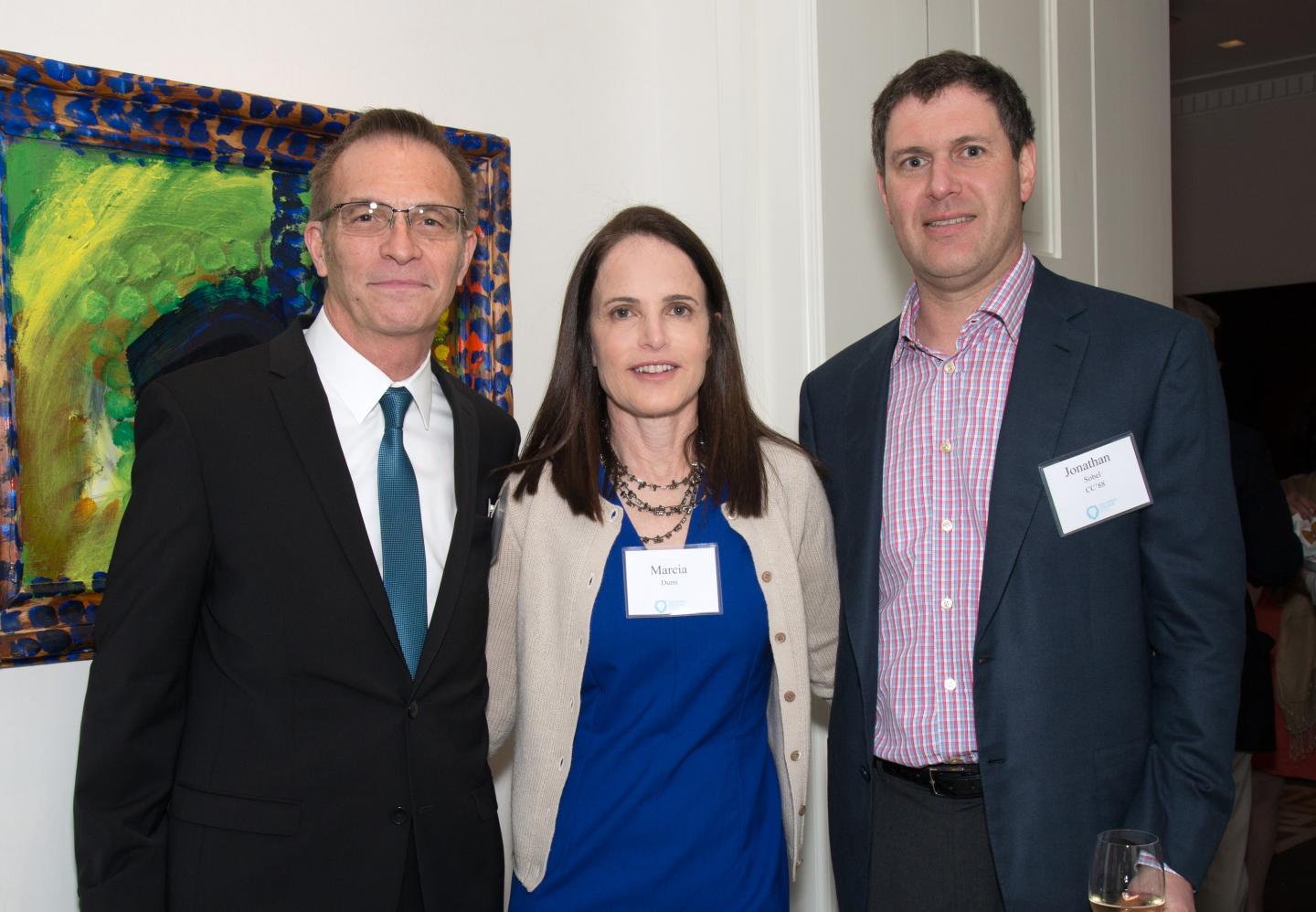A Lifelong Passion, Sparked in Art Hum

Photo by Jill Levine
Jonathan Sobel CC’88 credits Art Humanities for sparking his lifelong passion for art. “Art Hum was more than my introduction to art. It was a building block that kindled an enthusiasm, fascination and appreciation that remains with me 35 years after my undergraduate days,” he says. Today, Sobel’s zeal for the art world is apparent through his pursuits as a collector and philanthropist.
Recently, Sobel’s love of the arts and the Core Curriculum inspired him and his wife, Marcia Dunn, to establish the Jonathan Sobel & Marcia Dunn Program Chair for Art Humanities. This generous gift is part of Sobel’s and his family’s leadership commitment to the Core to Commencement campaign, with a portion designated as a planned gift to Columbia College.
Sobel, a veteran of the financial services industry, is the managing member of DTF Holdings. Prior to forming DTF Holdings in 2009, his impressive career at Goldman Sachs spanned more than 20 years. Sobel was presented a John Jay Award for distinguished professional achievement in 2004. He is a longtime Columbia College Fund donor and dedicated volunteer, serving as co-chair of the College Fund and as a member of the Core to Commencement Steering Committee and the Columbia College Alumni Association Executive Committee. In addition to his philanthropic work with alma mater, Sobel is a trustee of the Hospital for Special Surgery and the Whitney Museum of American Art.
Sobel and Dunn could not have anticipated what would lie ahead for our world and the Core when they pledged their campaign commitment. The swift transition to virtual learning for Art Hum, precipitated by the Covid-19 pandemic starting in spring 2020, was overseen by Noam Elcott CC’00, the Jonathan Sobel & Marcia Dunn Program Chair for Art Humanities and an associate professor of art history and archaeology. Elcott was uniquely poised for the task. By the time he assumed the role of chair in 2018, he had already instituted technological enhancements through digitally annotated images, online discussion boards and video resources. Under Elcott’s direction, Art Hum staff also created an instructor website with extensive lesson plans, slides, readings and other supporting materials.
With even more digital aids and support added in response to the pandemic, Elcott notes that “class discussions have remained as vibrant as ever” in the virtual environment. Now, as students participate in Art Hum from across the globe, they are encouraged to take advantage of and think about the art and architecture in the locales where they currently reside. Students glean insights from the Metropolitan Museum of Art, Chinese pagodas, multinational corporate campuses in India and the legacy of slavery in Southern architecture. Elcott predicts the department will continue to use new digital tools, “many of which have proven to be a hit and are almost certain to remain in the post-Covid era,” he says. Additionally, Elcott plans to expand Art Hum’s reach to the global environments where College students are right now.
The adjustments prompted by the transition to virtual learning and other technological changes are essential to the future of Art Hum as envisioned by Elcott. He describes Art Hum as an inquiry into “the nexus of images that shaped epochs, which in turn shape our perceptions today.” He views Art Hum as an opportunity to provide students with the tools to interpret our increasingly visual world. Elcott also feels that Art Hum is an essential part of the Core experience because it provides students “the knowledge to understand those who preceded us, and the foresight to imagine worlds yet to come.”
Another part of Elcott’s vision is for Art Hum to reflect the pressing issues of both the art world and the world at large. Recently, the Art Hum syllabus underwent its biggest overhaul since 1947, and it now includes women artists and artists of color. Sobel says he was pleased to see the syllabus revisions reflecting modern contributions to the arts, noting, “If you cover the history of art from inception to date, you can’t forget the ‘to date’ part.”
The updated syllabus reflects the exchange and dialogue that has made the Core Curriculum a unique and highly successful program for more than 100 years. “Today, and going forward, the Art Hum curriculum will engage the joys and challenges of human existence in greater complexity and more sophistication than ever before,” Elcott says of the revision. Art Hum will now undergo triennial reviews with input from students, instructors and Core leadership.
Rethinking Art Hum enriches the Core’s intellectual mission and enduring value. Sobel’s passion for the arts is a testament to the influence of the Core on students and alumni. His family’s generosity through the Jonathan Sobel & Marcia Dunn Program Chair for Art Humanities will have a lasting impact on the College and support the exploration of art’s complex landscape and influence on societal views. Like it did for him, Art Hum will continue to open worlds for students to interpret, explore and connect.